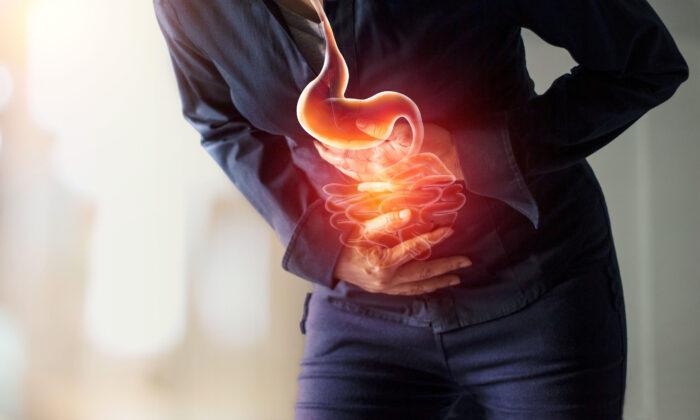In the past few years, “weight bias” has gained awareness as a form of discrimination. Doctors are attacked for mentioning weight, and there’s even a
“don’t weigh me” card that patients can hand to medical professionals during an office visit. The card says, “If you really need my weight, please tell me why so I can give you my informed consent.”
On the other side, the card says “most health conditions
can be addressed without knowing my weight,” and constant weighing contributes to
“weight stigma.” So far,
73,384 people have requested the cards.
It’s certainly true that people with excess weight are discriminated against on many levels. Moreover, the United States and many other nations have levels of obesity not seen before, which no doubt drives the anti-weight-discrimination movements. Still, the ire of anti-weight bias and “sizism” websites rarely seems to be directed at one clear cause of adult and childhood obesity: junk, processed, and fast-food producers.
Junk, processed, and fast food is not only brimming with unhealthful ingredients such as
high fructose corn syrup and salt, it’s arguably the most advertised and available food in urbanized Western cultures. Some Epoch Times readers will remember that there was a time when “food courts” didn’t exist in malls, and junk food wasn’t readily available in banks, bookstores, car washes, hardware stores, train stations, and yes, hospitals. An overweight 30-year-old woman who didn’t want her name used, shed more than 40 pounds with no effort when she studied in an African country that didn’t have a “snack culture” of junk, processed, and fast food.
In a Los Angeles Times
editorial, Michael Moss, author of “Hooked: Food, Free Will, and How the Food Giants Exploit Our Addictions,” observes that the $1-trillion junk, processed, and fast food industry, often called Big Food, has created products so addictive that people can’t resist them, and then convinces people the excess weight is their fault.
How is such food made irresistible and addictive? There are food technology labs dedicated to just that goal,
says Moss, with $40,000 devices that simulate a chewing mouth to, for example, perfect how a potato chip behaves in the mouth.
“People like a chip that snaps with about four pounds of pressure per square inch,” he said.
The actual time it takes to chew food has also been modified by food technologists, according to the website
Experience Life.
“In the [45 years] that I have been in the food business, we used to have foods that we chewed 15 times and 20 times and 30 times before we swallowed,” said Gail Vance Civille of the consumer research firm Sensory Spectrum. Now, most foods only have to be chewed 12 times and “you’re in for the next hit to get more pleasure.”
Questions About Goals, Tactics, and ‘Thin Privilege’
No one could disagree that weight bias—sizism—is wrong and that people shouldn’t be judged for their weight, height, shape, beauty, and skin color. But most medical professionals don’t agree with the corollary that excess fat is medically inconsequential (or, as the “Don’t Weigh Me” card says, “most health conditions
can be addressed without knowing my weight.")
The truth is that
obesity invites a host of health problems, from diabetes, respiratory conditions, and
hypertension to stroke risk, as well as colorectal, uterine corpus, gallbladder, kidney, and pancreatic
cancers. The claim of “fit but fat” is not supported by science and is
largely wishful thinking.
Nonetheless, the concept of “thin privilege” has somehow emerged from the anti-weight-bias movement charging that, like “white privilege” and “male privilege,” some have unfair advantages in society making them de facto oppressors.
According to an article last year called “What Is Thin Privilege?” in
Good Housekeeping: “Like all forms of privilege, the person who has it [thin privilege] may not realize they have any advantage, because it’s simply normal for them to, say, not have to think about whether they can fit between tables in a tiny bistro [or] whether their size clothing will be readily available.
“Public spaces and furniture—chairs, benches, tables, bus, and theater seats—are designed with smaller people in mind.”
Many, including those who carry excess weight, may find the statements jolting. If someone can no longer use traditional seating, it’s society’s fault for catering to “thin privilege”? Not the person’s lifestyle, choices, and especially eating habits? Society is to blame if someone can’t fit into a chair?
The Good Housekeeping
article adds “intersectionality” to the issue—the conviction that all victim groups (fat, black, brown, female, trans, gay, non-binary, disabled, Asian, Muslim) are oppressed by the same system and the same oppressors. It quotes a book that suggests that Anglo–Saxons are “taller and slenderer than other races,” and opines that “racism, sexism, and fatphobia often go hand in hand.” But is that really true? Instead of dealing with the root of the problem and the myriad health issues that go with it, such thinking divides society while it obscures the causes.
What Is Disordered Eating?
Some “thin privilege”
devotees call dieting and calorie consciousness “disordered eating” and an “eating disorder” while they ignore the snacking/overeating culture that Big Food has created. Worse, thin privilege devotees frequently allow no wiggle room (pun intended) between anorexia and health-impacting obesity. For example, when the singer Jessica Simpson sported a noticeable weight gain at a
2009 concert, she defended it as a “decision not to make myself anorexic”—as if there were no healthy area between being overweight and having an eating disorder.
Some thin privilege devotees
suggest that eating that doesn’t produce obesity is not “natural,” as if the “natural” human state is to overeat and carry excess weight. Certainly, food tastes good and gives us pleasure; certainly, some bodies are stocky and will never be svelte, but does that mean all nutritional self-discipline should be thrown out the window? Cleaning our homes, washing our cars, and mowing our lawns is also not “natural,” easy, or fun, but we do it for the payoffs.
There Is Money in Obesity
Moss notes that the industries that hook us on addictive junk food also want us to blame ourselves—not them. Nor are they the only beneficiaries of a hijacked eating system. The diet food industry, valued at
$71 billion, and fitness industry, valued at
$87 billion, also appreciate our easily gained excessive weight.
Then, there’s Big Pharma. Excess weight creates a market for drugs to treat cholesterol, blood pressure, diabetes, and acid reflux. It sells drugs for aching backs, hips, and knees. And then there’s the business of surgery and prosthetic implants such as hip and knee replacements. Leniently prescribed psychiatric drugs for depression and mood problems—with their notorious weight-gaining actions—add to obesity.
Our obesity epidemic is a complicated problem with far-reaching consequences. We’re addicted to easy, cheap, unhealthy food, and the makers and distributors of these foods are addicted to the profits that come from using cheap ingredients that have excellent shelf-life, such as salt, sugar, and
government-subsidized high-fructose corn syrup.
While we can’t put all the blame on food makers, since our choices drive their profits, we also shouldn’t put all the blame on ourselves. And for those that suffer from obesity, blaming thin people makes no sense at all.






